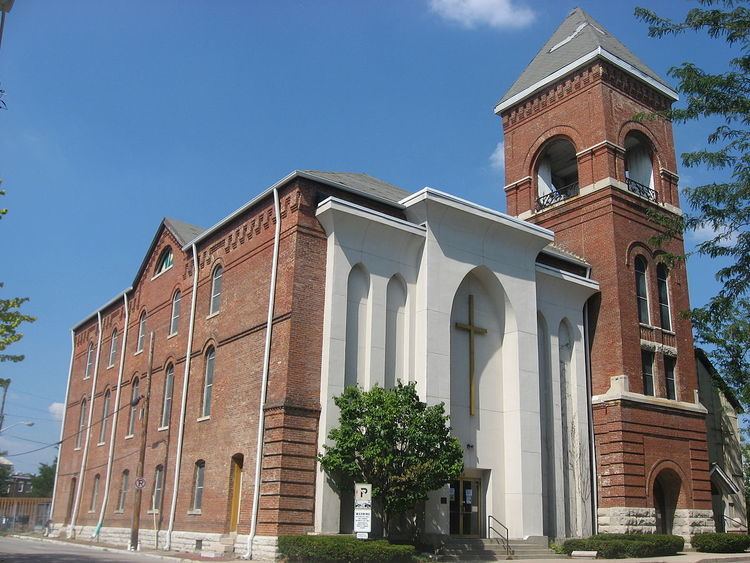Area less than one acre Architect Adam Busch Opened 1869 Added to NRHP 21 March 1991 | Built 1869 NRHP Reference # 91000269 Phone +1 317-634-7002 | |
 | ||
Location 414 W. Vermont St., Indianapolis, Indiana Architectural style Modern Movement, Other, Romanesque, Post Modern Address 414 W Vermont St, Indianapolis, IN 46202, USA Similar Esplanade Apartments, The Blacherne, George Stumpf House | ||
The Bethel A.M.E. Church is a historic church in Indianapolis, Indiana. It was built in 1869 and added to the National Register in 1991.
Bethel is Indianapolis's oldest African-American church. It has steadfastly served its community since before the Civil War. The church was founded in 1836 by a group of African-American Methodists. Members built a small church building on Georgia Street in between the Central Canal and Senate Avenue five years later. In 1857 members purchased Christ Episcopal Church and moved the building to their church's site on Georgia Street. The role of Bethel AME Church, which was originally known as the Indianapolis Station AME, grew along with the black population of the city.
That black population made up approximately less than 3 percent of the total population in Indianapolis before the Civil War. Out of the total population of 1,338,710 in the state of Indiana in 1860, only 11,428 were African American. As the Civil War progressed though, the number of blacks coming to Indianapolis from the South as well as rural areas around the state only grew higher and higher.
Bethel AME Church members purchased a lot on West Vermont Street in 1867 for the construction of a new church building. By 1869 members had approved the name Bethel and moved to the new building on 414 West Vermont Street. The new place of worship also became a place for social activism as well as a venue for organizing and implementing services in the black community. Those services included providing money, clothing, and temporary lodging to African-Americans immigrating to the city from the South after the Civil War.
Bethel AME Church continued to be an important thread in the fabric of the black community located to the northwest of Indianapolis's downtown area during the twentieth century, functioning as a space of racial solidarity and fulfilling a role that was interwoven throughout civil rights struggles and community outreach services for African Americans in the city. The church also served as a venue for the organization of local associations that were instrumental in the push to achieve better housing, education, and equal rights for African Americans. Both the Indianapolis NAACP chapter and Indiana State Federation of Colored Woman's Clubs were established at Bethel.
Members renovated the church building and adjoining parsonage in 1974 in order to make more space for outreach activities. Bethel AME Church was listed on the National Register of Historic Places in 1991. It is the only African-American church building in Indianapolis to receive that recognition.
Indianapolis's oldest African-American church is still active in 2014, occupying the same site it did in 1869. The state Historical Marker for Bethel AME Church, which is located across from the building on West Vermont Street, was dedicated on Saturday, June 20, 2009.
The church is also a member of the Indianapolis Congregation Action Network (IndyCan) and has served as headquarters for IndyCan's Mass Transit Campaign since 2013.
Founding
Founded by William Paul Quinn and Augustus Turner in 1836, the church, known as "Indianapolis Station." The first meetings were held in Quinn's log cabin. In 1841 a house of worship was constructed. The congregation had grown to 100 by 1848 and became active in the antislavery movement. The congregation supported the Underground Railroad, providing protection to slaves en route to Canada. Their open support of the abolitionist movement lead some pro-slavery advocates, it is believed, burn the church down in 1862. The congregation went on and rebuilt the church in 1867.
Known as the "mother church" of the African Methodist faith in Indiana, Bethel also played an important role in the community after the Civil War. The church opened schools for African Americans in Indianapolis. At one time, they operated a kindergarten onsite. Local chapters of many organizations were created at Bethel, including the Indianapolis chapter of the NAACP and the Indiana State Federation of Colored Woman's Clubs.
